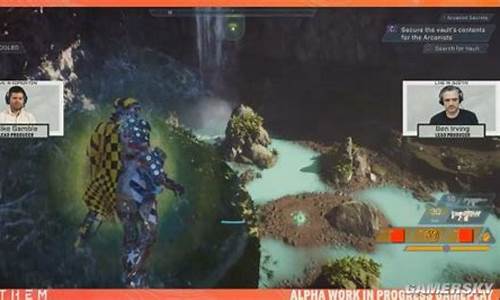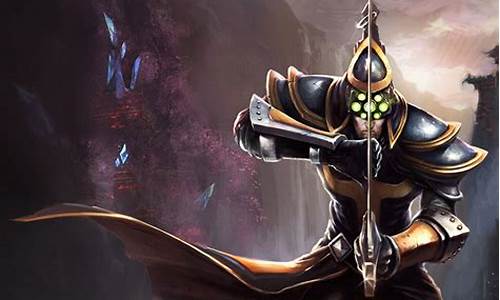mass圣歌_圣歌ea
1.谁能帮忙找点古典音乐资料 要英文的
2.谁有节奏感快的又特别强的英文歌曲?急急急急!

我也有听这首歌,不过没你说的那种感觉。不过这首歌的节奏确实有一点恐怖片的感觉,只是在开头。
你可能在什么时候听过这首歌,而且当时你可能正在看鬼片,或恐怖/一类的东西,只不过你忘记了,但是记忆并不会真正的遗忘,而是储存在大脑里。再次听到才会有这种感觉。
因为我也有过这种经历,我在看恐怖的时候,听过一遍“2002年的第一场雪”,之后只要一听这首歌,我就浑身不舒服。
当然也有可能是这首歌的节奏跟某些恐怖片的配乐类似,所以会勾起你不好的回忆。
其实只要你以后不在听这首歌就好了,没什么大不了的。
如果你还担心的话,去找心理医生,让他帮你催眠找一下原因,应该会根治。
谁能帮忙找点古典音乐资料 要英文的
歌名:the mass
歌手简介:Era,英文原意为“时代、世纪”,Era是一个风格与Gregorian接近的音乐团体,两者的音乐类型都是圣歌与现代器乐的融合。
合唱《The Mass》的灵感来自《Carmina Burana 布兰诗歌》--《哦!命运女神》,era将“布兰诗歌”与era专辑的曲目“Divano"巧妙的熔于一炉,加以节奏强烈的现代电声乐,使全曲气势磅礴、震撼人心。
现在能搜到的所谓《ss闪电部队在前进》”,其实是ERA的《The Mass》,只能说是以讹传讹,据说该国战歌也是改编于《布兰诗歌》,同曲但异工。
随着这首歌的名声日躁,更多的游戏也吸收了其鼓舞人心的一面,很多玩家自制的《魔兽世界》就大量使用了《THE Mass》作为背景音乐。
拉丁语(附翻译):
Semper crescis 始终满盈 Aut decrescis 或又虚亏 Vita detestabilis 可恶的生活
Nunc obdurat 时而铁石心肠 Et tunc curat 时而又关心抚慰 Ludo mentis aciem 当作游戏一般
Nunc obdurat 时而铁石心肠 Et tunc curat 时而又关心抚慰 Ludo mentis aciem 当作游戏一般
Egestatem 穷困 Potestatem 权力 Dissolvit ut glaciem 被它如冰雪般融化
Divano 圣哉 Divano me 圣哉,弥 Divano messi 圣哉,弥赛
Divano messia 圣哉,弥赛亚(救世主) Divano messia 圣哉,弥赛亚
谁有节奏感快的又特别强的英文歌曲?急急急急!
History of Classical Music
Medieval (c.1150 - c.1400)
This is the first period where we can begin to be fairly certain as to how a great deal of the music which has survived actually sounded. The earliest written secular music dates from the 12th century troubadours (in the form of virelais, estampies, ballades etc.), but most notated manuscripts emanate from places of learning usually connected with the church, and therefore inevitably he a religious basis.
Gregorian chant and plainsong which are monodic (i.e. written as one musical line) gradually developed during the 11th to 13th centuries into organum (i.e. two or three lines moving simultaneously but independently, therefore almost inadvertently representing the beginnings of harmony). Organum was, however, initially rather stifled by rigid rules governing melody and rhythm, which led ultimately to the so-called Ars Nova period of the 14th century, principally represented by the composers de Vitry, Machaut, and Landini.
Recommended Recording:
Adorate Deum: Gregorian Chant from the Proper of the Mass Nova Schola Gregoriana
Naxos 8.550711
Renaissance (c.1400 - c.1600)
The fifth century witnessed vastly increased freedoms, most particularly in terms of what is actually perceived as 'harmony' and 'polyphony' (the simultaneous movement of two or three interrelated parts). Composers (although they were barely perceived as such) were still almost entirely devoted to choral writing, and the few instrumental compositions which he survived often create the impression (in many cases entirely accurately) of being vocal works in disguise, but minus the words.
There is obvious new delight in textural variety and contrast, so that, for example, a particular section of text might be enhanced by a vocal part dropping out momentarily, only to return again at a special moment of emphasis. The four most influential composers of the fifth century were Dunstable, Ockeghem, Despres and Dufay.
The second half of the 16th century witnessed the beginnings of the tradition which many music lovers readily associate with the normal feel of 'classical' music. Gradually, composers moved away from the modal system of harmony which had predominated for over 300 years (and still sounds somewhat archaic to some modern ears), towards the organisation of their work into major and minor scales, thereby imparting the strong sensation of each piece hing a definite tonal centre or 'key'.
This was also something of a golden period for choral composition as a seemingly endless flow of a capella (unaccompanied) masses, motets, anthems, psalms and madrigals flowed from the pens of the masters of the age. In addition, instrumental music came into its own for the first time, especially keyboard music in the form of fantasias, variations, and dance movements (galliards, panes etc.). Composers of particular note include Dowland, Tallis, Byrd, Gibbons, Frescobaldi, Palestrina, Victoria, Lassus, Lobo, Cardoso and Gesualdo.
历史上的古典音乐
Medieval (c.1150 - c.1400) 中世纪( c.1150 -c .1400)
This is the first period where we can begin to be fairly certain as to how a great deal of the music which has survived actually sounded.这是第一期,我们已可开始得到相当肯定至于如何了大量的音乐,其中已存活实际上响起。 The earliest written secular music dates from the 12th century troubadours (in the form of virelais, estampies, ballades etc.), but most notated manuscripts emanate from places of learning usually connected with the church, and therefore inevitably he a religious basis.最早写世俗音乐的日期从12世纪troubadours (形式virelais , estampies , ballades等) ,但大多数人notated手稿来自地方的学习通常是与教会,因此,不可避免地有一个以宗教为基础。
Gregorian chant and plainsong which are monodic (i.e. written as one musical line) gradually developed during the 11th to 13th centuries into organum (i.e. two or three lines moving simultaneously but independently, therefore almost inadvertently representing the beginnings of harmony).格里高唱和plainsong是monodic (即笔试和一所音乐系) ,逐步发展,在11日至十三世纪到organum (即两个或三个动线,同时但独立的,所以几乎在不经意代表的开端和谐) 。 Organum was, however, initially rather stifled by rigid rules governing melody and rhythm, which led ultimately to the so-called Ars Nova period of the 14th century, principally represented by the composers de Vitry, Machaut , and Landini . organum不过,当时的初期,而不是扼杀刚性规则的旋律和节奏,从而导致最终的目的是要以所谓人工鱼礁新的时期, 14世纪,主要是由作曲家德vitry , 马豪 , landini 。
Recommended Recording: 推荐唱片:
Adorate Deum: Gregorian Chant from the Proper of the Mass Nova Schola Gregoriana adorate deum :阳历高唱从适当的大众新schola gregoriana
Naxos 8.550711 商Naxos 8.550711
Renaissance (c.1400 - c.1600) 文艺复兴( c.1400 -c .1600)
The fifth century witnessed vastly increased freedoms, most particularly in terms of what is actually perceived as 'harmony' and 'polyphony' (the simultaneous movement of two or three interrelated parts). 15世纪见证了大大增加了自由,最特别是在什么样的,其实是被视为'和谐'和'复调' (同步运动的两个或三个相互联系的部分) 。 Composers (although they were barely perceived as such) were still almost entirely devoted to choral writing, and the few instrumental compositions which he survived often create the impression (in many cases entirely accurately) of being vocal works in disguise, but minus the words.作曲家(虽然他们都是勉强的感觉是这样的)仍在几乎完全致力于合唱写作,少数乐器组成,其中有存活往往造成一种印象, (在许多情况下完全准确)的正声乐作品在乔装打扮,但减去的话。
There is obvious new delight in textural variety and contrast, so that, for example, a particular section of text might be enhanced by a vocal part dropping out momentarily, only to return again at a special moment of emphasis.有明显的新喜悦,在质地品种和反差,因此,举例来说,某一特定文本中的一段可能得到加强声乐部分辍学的瞬间,只有回到一个多星期,又特殊的时刻重视。 The four most influential composers of the fifth century were Dunstable, Ockeghem, Despres and Dufay.四个最有影响力的作曲家15世纪被dunstable , ockeghem , Despres )虽然与杜费。
The second half of the 16th century witnessed the beginnings of the tradition which many music lovers readily associate with the normal feel of 'classical' music.下半年, 16世纪见证了开端的传统,其中许多音乐爱好者很容易联想与正常的感觉'经典'的音乐。 Gradually, composers moved away from the modal system of harmony which had predominated for over 300 years (and still sounds somewhat archaic to some modern ears), towards the organisation of their work into major and minor scales, thereby imparting the strong sensation of each piece hing a definite tonal centre or 'key'.渐渐地,作曲家迁离模态系统的和谐,其中占主导地位,为300多年前(和现在听起来有点过时的一些现代耳) ,对组织,其工作分为主要和次要的鳞片,从而传授强烈的感觉:每块有明确音调中心或'关键' 。
This was also something of a golden period for choral composition as a seemingly endless flow of a capella (unaccompanied) masses, motets, anthems, psalms and madrigals flowed from the pens of the masters of the age.这也是东西的一个黄金时期,合唱组成似乎永无休止的流一capella (举目无亲)群众, motets ,国歌,圣歌和madrigals流到从钢笔的主人的年龄。 In addition, instrumental music came into its own for the first time, especially keyboard music in the form of fantasias, variations, and dance movements (galliards, panes etc.).此外,器乐开始自成体系,为第一次,特别是键盘音乐的形式fantasias ,变异,舞蹈动作( galliards , panes等) 。 Composers of particular note include Dowland, Tallis, Byrd, Gibbons, Frescobaldi, Palestrina, Victoria, Lassus, Lobo, Cardoso and Gesualdo.作曲家特别值得注意的包括道兰,合唱团,伯德,长臂猿,弗雷斯科巴尔迪, palestrina ,维多利亚, lassus ,罗保后,卡多佐和gesualdo 。
Recommended Recording: 推荐唱片:
Byrd: Mass for Four Voices; Mass for Five Voices; Infelix ego伯德:质量为四个声音;大规模五声音; infelix自我
Naxos 8.550574 商Naxos 8.550574
Palestrina: Missa Papae Marcelli; Missa aeterna Christi munera palestrina :弥撒曲" papae marcelli ;弥撒曲"依特钠基督教munera
Naxos 8.550573 商Naxos 8.550573
Palestrina: Missa hodie Christus natus est; Hodie Christus natus est; Stabat mater / Lassus: Missa bell' amfitrit' altera palestrina :弥撒曲"为今天基督natus预测;遭受今天基督natus预测; stabat材料/ lassus :弥撒曲"钟' amfitrit ' Altera公司
Naxos 8.550836 商Naxos 8.550836
Victoria: Missa O magnum mysterium; Missa O quam gloriosum / A. Lobo: Versa est in luctum维多利亚:弥撒曲" o马格兰神秘;弥撒曲" o怎么gloriosum /甲罗保:反之亦然预测在luctum
Naxos 8.550575 商Naxos 8.550575
Lobo: Missa pro defunctis / Cardoso: Missa pro defunctis罗保:弥撒曲"亲defunctis /卡多佐:弥撒曲"亲defunctis
Naxos 8.550682 商Naxos 8.550682
Lamentations悲叹
Music by Tallis, White, Palestrina, Lassus and de Brito音乐由合唱团,白, palestrina , lassus和德布里托
Naxos 8.550572 商Naxos 8.550572
Lassus: Missa super entre vous; Infelix ego; Missa imitationem moduli susanne un tour lassus :弥撒曲"超级登入vous ; infelix自我;弥撒曲" imitationem模苏珊联合国之旅
Naxos 8.550842 商Naxos 8.550842
Tallis: Mass for Four Voices; Motets塔利斯:质量为四个声音; motets
Naxos 8.550576 商Naxos 8.550576
Gesualdo: Sacred Music for Five Voices (Complete) gesualdo :神圣的音乐为五声音(完整)
Naxos 8.550742 商Naxos 8.550742
Baroque (c.1600 - c.1750) 巴洛克( c.1600 -c .1750)
During the Baroque period, the foundations were laid for the following 300 or so years of musical expression: the idea of the modern orchestra was born, along with opera (including the overture, prelude, aria, recitative and chorus), the concerto, sonata, and modern cantata.在巴洛克时代,奠定了基础,为下列300年或稍后的音乐表现:构思现代乐团诞生了,随着戏曲(包括序曲,前奏曲,咏叹调, recitative和合唱团) ,协奏曲,奏鸣曲和现代的大合唱。 The rather soft-grained viol string family of the Renaissance was gradually replaced by the bolder violin, viola and cello, the harpsichord was invented, and important advances were made in all instrumental groups.该比较软晶侵犯。弦乐家族的文艺复兴逐渐取代了大胆的小提琴,中提琴和大提琴,古键琴的发明,并取得了重大进展,在所有的乐器组。
Until about 1700, the old modes still exerted themselves from time to time by colouring certain melodic lines or chord progressions, but from the beginning of the 18th century the modern harmonic system based upon the major and minor scales was effectively pan-European.直到大约1700年旧模式仍在竭力不时由填色某些旋律线或弦级数,但是,从十八世纪初,现代谐系统后,主要和次要的尺度是有效的泛欧洲。 Choral music no longer dominated, and as composers turned more and more to writing idiomatic instrumental works for ensembles of increasing colour and variety, so 'classical' music (as opposed to 'popular') gradually began to work its way into the very fabric of society, being played outdoors at dinner parties or special functions (e.g. Handel's Water Music), or as a spectacle in the form of opera.合唱音乐已不再占主导地位,并作为作曲家把越来越多的写作成语器乐作品为合奏增加颜色和品种,使'古典音乐(有别于'受欢迎' )逐渐开始工作地渗透到结构社会中,正在发挥在室外宴会场合或特殊功能(如: ( Handel的水上音乐) ,或作为一个奇观,在形式的歌剧。 On a purely domestic level, every wealthy lady would he a spinet to play, and at meal-times the large and rich houses would employ musicians to play what was popularly called Tafelmusik in Germany, of which Telemann was perhaps the most famous composer.对纯粹的国内层面,每一个有钱的夫人将有spinet发挥,并在饭后倍大国和富国房子将聘请音乐家,以发挥什么深受所谓tafelmusik在德国,其中telemann也许是最有名的作曲家。
Of the many 17th century composers who ped the way for this popular explosion of 'classical' music, the following were outstanding: Monteverdi , Corelli , Alessandro Scarlatti, Schutz, Buxtehude, Purcell and Lully.在众多的17世纪作曲家的人铺平了道路,为这个热门爆炸的'古典音乐,有以下几个悬而未决: 蒙特威尔第 , corelli ,亚历山德罗斯卡拉蒂,舒茨, buxtehude ,裴熙亮和lully 。 Yet, the most popular composers of the period, indeed those who seem to define by their very names the sound of Baroque music at its most colourful and sophisticated are Johann Sebastian Bach, Handel, Telemann, Rameau, Fran?ois Couperin , Domenico Scarlatti, and Vivaldi, all of them at their creative peak during the first half of the 18th century.不过,最受欢迎的作曲家此期间,有些人似乎界定,以他们名字的声音巴洛克音乐在其最多姿多彩和精密的是约翰塞巴斯蒂安巴赫, ( Handel , telemann ,拉摩, 弗朗索瓦couperin , ( Domenico斯卡拉蒂,韦华,他们都在自己的创作高峰期在上半年的18世纪。
Classical (c.1750 - c.1830) 古典( c.1750 -c .1830)
The Baroque era witnessed the creation of a number of musical genres which would maintain a hold on composition for years to come, yet it was the Classical period which saw the introduction of a form which has dominated instrumental composition to the present day: sonata form.巴洛克时代的见证设立了许多音乐流派,其中将维持持有组合今后几年,但它是古典时期,其中看到了开征某种形式,其中有乐器为主组成的,以本日:奏鸣曲形式。 With it came the development of the modern concerto, symphony, sonata, trio and quartet to a new peak of structural and expressive refinement.与它来发展现代协奏曲,交响曲,奏鸣曲,三重奏及四重奏,以一个新的高峰结构性和表现力细化。 If Baroque music is notable for its textural intricacy, then the Classical period is characterised by a near-obsession with structural clarity.如果巴洛克音乐是显着,其构造复杂性,那么,古典时期的特点是一个近痴迷结构清晰。
The seeds of the Classical age were sown by a number of composers whose names are now largely forgotten such as Schobert and Honnauer (both Germans largely active in Paris), as well as more historically respected names, including Gluck, Boccherini and at least three of Johann Sebastian Bach's sons: Carl Phillip Emmanuel, Wilhelm Friedmann and Johann Christian (the so-called 'London' Bach).的古典时代播下了由多个作曲家的名字,现在基本上被遗忘,如朔贝特和honnauer (均德国人,主要活跃于巴黎) ,以及更尊重历史地名,包括格鲁克, boccherini和至少3名约翰塞巴斯蒂安巴赫的儿子:卡尔菲利普灵光,威廉弗里德曼和约翰基督教(即所谓『伦敦』巴赫) 。 They were representative of a period which is variously described as rococo or galante, the former implying a gradual move away from the artifice of the High Baroque, the latter an entirely novel style based on symmetry and sensibility, which came to dominate the music of the latter half of the 18th century through two composers of extraordinary significance: Joseph Haydn and Wolfgang Amadeus Mozart .他们分别代表的一个时期,这是各种形容为洛可可或加兰特,前者暗示逐渐迁离从手腕的高级巴洛克式,而后者是一个完全新颖的风格基础上的对称性和感性,来主宰音乐的下半年, 18世纪两个作曲家有着非同寻常的意义: 约瑟夫海顿和沃尔夫冈Amadeus的莫扎特 。
Early Romantic (c.1830 - c.1860) 早期浪漫( c.1830 -c .1860)
As the Classical period reached its zenith, it was becoming increasing clear (especially with the late works of Beethoven and Schubert) that the amount and intensity of expression composers were seeking to achieve was beginning to go beyond that which a Classically sized/designed orchestra/piano could possibly encompass.作为古典时期达到了顶点,它正在变得越来越清晰(尤其是与已故的作品, 贝多芬和舒伯特)的数量和强度的表达作曲家正在谋求实现正开始超越了那些经典大中/设计乐团/钢琴可能不同。 The next period in musical history therefore found composers attempting to balance the expressive and the formal in music with a variety of roaches which would he left composers of any previous age utterly bewildered.今后一个时期,在音乐史,因此发现作曲家企图以平衡表现力和正规的音乐与不同的途径,将已离开的作曲家以往任何时代完全莫名其妙。 As the musical map opened up, with nationalist schools beginning to emerge, it was the search for originality and individuality of expression which began here that was to become such an over-riding obsession in the present century.作为音乐地图打开了,与民族主义者所学校开始出现,这是搜索的原创性与个性的表达,开始在这里表示,要成为这样一种压倒一切的痴迷,在本世纪。
The Romantic era was the golden age of the virtuoso, where the most fiendishly difficult music would be performed with nonchalant ease, and the most innocuous theme in a composition would be developed at great length for the enjoyment of the adoring audience.浪漫时代是黄金时代的能人,哪里最困难fiendishly音乐,将演出满不在乎的缓和,最无害的主题,在一个组合,将发展在很大篇幅为享受的崇拜观众。 The emotional range of music during this period was considerably widened, as was its harmonic vocabulary and the range and number of instruments which might be called upon to play it.情绪各类音乐,在此期间被大大拓宽,正如其谐波词汇及范围和文书的数目可能被要求发挥它。 Music often had a 'programme' or story-line attached to it, sometimes of a tragic or despairing nature, occasionally representing such natural phenomena as rivers or galloping horses.音乐往往有一种''或故事,在网上重视它,有时一个悲剧性或绝望的性质,偶尔代表这种自然现象的河流或舞动的马匹。 The next hundred years would find composers either embracing whole-heartedly the ideals of Romanticism, or in some way reacting against them.未来一百年会发现作曲家要么拥抱衷心理想的浪漫主义,或以某种方式作出反应,对他们的。
Of the early Romantic composers, two Nationalists deserve special mention, the Russian Glinka (of Russlan and Ludmilla fame) and the Bohemian Smetana (composer of the popular symphonic poem Vlta or 'The Moldau').对早期浪漫主义作曲家,两个民族主义者特别值得一提,俄罗斯葛令卡( russlan和ludmilla名利)和波希米亚美塔纳 (作曲家一项十分受欢迎的交响诗尔塔瓦或' moldau ' ) 。 However, the six leading composers of the age were undouedly Berlioz , Chopin , Mendelssohn , Schumann , Liszt and Verdi .然而, 6名领导作曲家的年龄无疑是柏辽兹 , 肖邦 , 门德尔松 , 舒曼 , 李斯特和威尔第 。
Late Romantic (c.1860 - c.1920) 晚浪漫( c.1860 -c .1920)
With the honourable exceptions of Brahms and Bruckner , composers of this period shared a general tendency towards allowing their natural inspiration free rein, often pacing their compositions more in terms of their emotional content and dramatic continuity rather than organic structural growth.与这位例外勃拉姆斯和布鲁克纳 ,作曲家这一时期分担的一般倾向,让他们自然的灵感放手,往往起搏其成分更在其情感内容和具有戏剧性的延续性,而不是有机的结构性增长。 This was an era highlighted by the extraordinarily rapid earance of the national schools, and the operatic supremacy of Verdi and Wagner .这是一个时代所强调的异常迅猛,出现了民族学校,及戏曲至高无上的威尔第和瓦格纳 。 The eventual end of Romanticism came with the fragmentation of this basic style, composers joining 'schools' of composition, each with a style that was in vogue for a short period of time.最终完的浪漫主义来支离破碎这一基本风格,作曲家加入'学校'的成分,每一种风格,那是时尚,进行了短暂的一段时间。
In order to do justice to a period so rich in famous names and compositions, this section is arranged alphabetically by country rather than composer.为了做到公正,一期有这么丰富的名牌和成分,这一节是依英文字母排列,由国家,而不是作曲家。
Bohemia波西米亚
the mass /
don't go away /
groove coverage
breaking my heart
as long as you love me
God is A Girl
I Cry
Far Away From Home
anyone of us
声明:本站所有文章资源内容,如无特殊说明或标注,均为采集网络资源。如若本站内容侵犯了原著者的合法权益,可联系本站删除。












